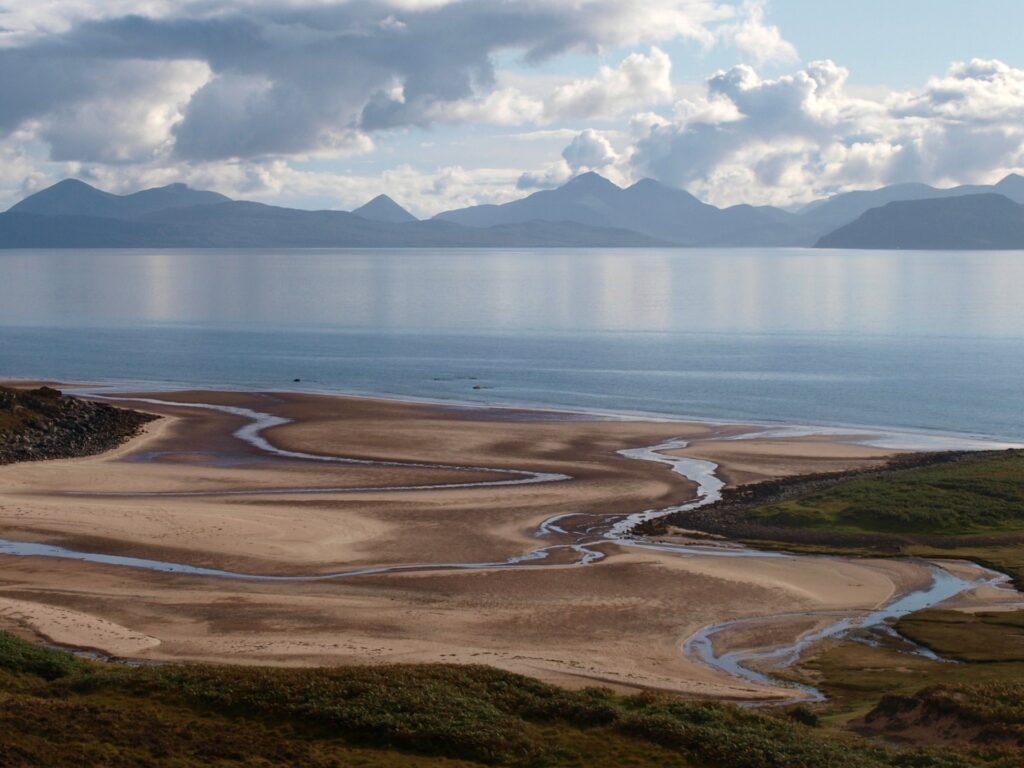ENVIRONMENTAL experts are warning Scotland’s coastline needs re-drawn completely to cope with predicted wide-scale flooding that threatens hundreds of homes, transport infrastructure and nuclear installations.
A new has report identified more than 100 towns it says are at risk of being inundated and recommends the radical action.
It also claims the nuclear submarine base at Faslane – home to the UK arsenal of Trident weapons – and areas around Glasgow Prestwick International Airport in Ayrshire are also in danger from rising sea levels.
The report from Scottish Natural Heritage says roads, railways, businesses and homes could all be affected within 50 years unless urgent action is taken.
Working with other groups, it has now issued a list of recommendations.
Among those coastal communities SNH says could be affected are Greenock, Gourock, Campbeltown, Lochgilphead, Dunoon, Faslane, Inverkip, Largs, Stevenson, Irvine, Troon, Prestwick, Ayr, Girvan, Rothesay and Kelburn.

Mike Cantlay, Chair of SNH, said: “As part of our role protecting all of nature for all of Scotland, we conduct regular research into the long term future of Scotland’s natural environment.
“We have identified more than 100 locations in the west of Scotland that may be at greater flood risk due to rising tides over the next 50 years.
“Having this advance notice allows partners to work together to address potential issues and plan ahead for ways to mitigate these risks.”
Protected areas important for nature including the Inner Clyde Special Protection Area (SPA) are also at risk.
Birds use the mudflats and saltmarsh in this area for feeding and nesting and the risk of losing these important habitats is higher because of climate change.
But the report says planners should now be ready to look at ways to manage and prevent the potential crisis.
It suggests a managed realignment – where river, estuary and or coastal water is allowed to extend beyond current flood defences – could be introduced at key sites in the Firth of Clyde including Erskine South, Newshot Island and Holy Loch.
Something similar has been tried before at Nigg in the Cromarty Firth.
That would involve moving existing defences or assets landwards – effectively moving the nation’s coastline in the way – to create a new coastline more able to cope with rising sea levels.
Professor Des Thompson of SNH said: “There are risks, for sure, but there are opportunities to allow nature to help us cope with climate change.
“One such solution is through managed realignment of the coast. This allows natural features such as saltmarsh to act as coastal defence.
“This research sits alongside other collaborative work with the Scottish Government, SEPA, Historic Environment Scotland, and local councils which appraises changing risks and opportunities in the light of climate change.”
“We know that rising sea levels and changing rainfall patterns and intensities are likely to increasingly affect nature and society. This work forewarns us and helps us plan for these possible changes.
“Clearly sea-level rise and its potential impacts represent a widespread issue which will affect low-lying land around the Firth of Clyde.
“These types of investigations allow us to plan together and ensure the planning system supports the right development in the right place.”
The report publication was managed by the Clyde Marine Planning Partnership which has a membership of more than 20 organisations.
Isabel Glasgow, Chair of the Clyde Marine Planning Partnership, said: “Regional Marine Plans must consider potential climate change impacts and seek to adapt.
“In some cases natural coastal protection can provide a solution.
“It is important that land and marine planners work together on these issues to ensure that coastal and marine development is in the right place.”
James Curran, Chair for Climate Ready Clyde, the City Region initiative said: “The report is a significant step forward in understanding the impacts of sea-level rise.
“It makes it clear that we must urgently increase efforts to reduce carbon emissions, whilst also making the challenging choices needed to adapt.
“It is crucial that Clydeplan, local councils, developers, infrastructure operators and communities continue to work together to identify ways forward for potential areas affected.
“Climate Ready Clyde is keen to facilitate this process, to provide confidence to the market to invest and help protect and increase the quality of life for those who live and work along the Clyde.
“We will also be using this report as part of our approach to assessing, prioritising and taking action on the climate change risks the City Region faces.”
The Scottish Green Party were today damning in their verdict of how the Scottish Government should be handling the danger.
Their Environment spokesman Mark Ruskell said: “The Scottish Government likes to congratulate itself for its targets for reducing climate emissions, but as this report makes clear, the seriousness of the global climate situation demands that we renew our ambition.
“While ministers propose increasing the target to a 90 percent reduction by 2050, they remain opposed to bring forward the target date.
“Greens believe aiming earlier, 2040, will drive innovation in transport, energy and agriculture – the biggest sources of emissions.
“We should aim to catch up and overtake other European countries such as France and Sweden who have already committed to becoming zero-carbon.”
Want to learn more? Read: Scottish Natural Heritage – publications, date and research
Image Credits: Coast, CC Emma Gibb CC Shaun Milne

